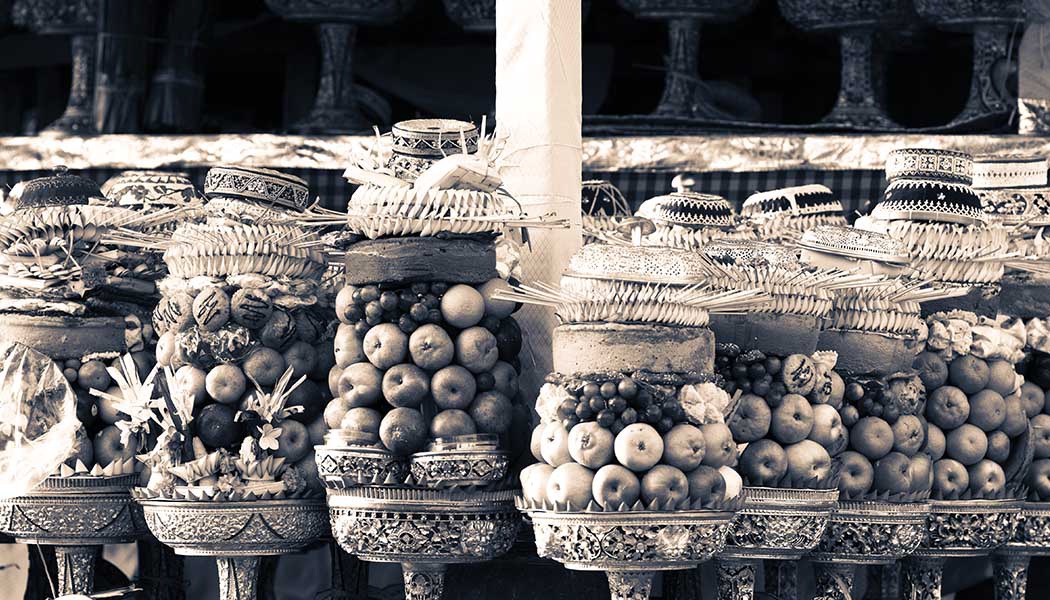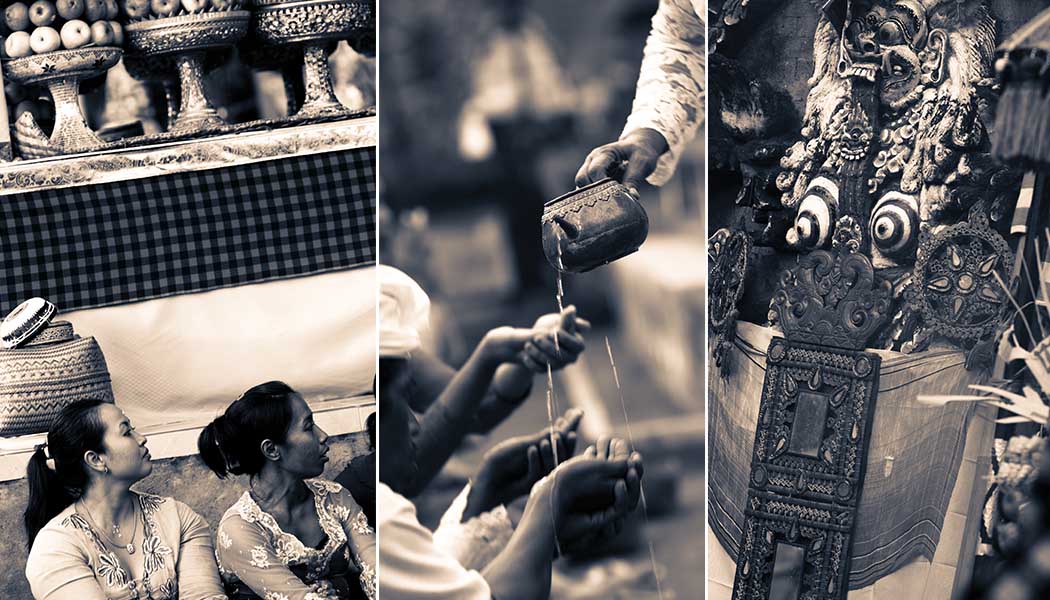Millions have marvelled at the strength and variety of the Balinese way. Long may it continue, writes Nigel Simmonds. Photos by Yaeko Masuda.
Even today, with the threat of mass tourism knocking at the door of Bali’s spiritual well being, the island remains intrinsically religious. Not a day passes without a ceremony taking place. Not a single shoot of rice is planted without the correct offerings first being made. Life, death, rebirth…the Balinese way of defining the cosmos is a humbling lesson in cosmic balance, an aesthetic orchestration of the often irksome questions which occasionally trouble all minds. Where are we from? Where are we going? What should we do while we are here? The Balinese have a few answers which they have made all their own.

They call it Agama Hindu Dharma, Religion of the Hindu Doctrine, and it represents an amalgamation of elements from both Hinduism and Buddhism, mixed in with pre-Hindu indigenous customs. Sometime between the 8th and 15th centuries. Hinduism and Buddhism arrived in Bali from India and Java and were blended with prevailing animist beliefs, producing a colourful mixture of ritual and doctrine that is dominated by the great Hindu epics – The Mahabharata and Ramayana – and the Hindu trinity of Brahma, Vishnu, and Siwa. Thus, all Balinese rituals, be they cockfights, tooth filings, cremations or others, are symbols of the constant cleansing process necessary for the maintenance of the cyclical balance of life, death, and reincarnation.

Daily, this cycle and the beings involved in it are honoured by the Balinese, a people for whom life is religion and religion is life. A pantheon of gods and demons, ever present in Balinese minds, are lauded with offerings that range from the simple to the elaborate: a few grains of rice placed on a tiny square of banana leaf at the foot of a house; a procession of towering cones of fruit borne on the heads of kebaya-clad women. Being gifts to higher souls, these omnipresent offerings are created with much care and dedication. There are literally hundreds of different types ranging in size and content depending on the occasion. Each is used in conjunction with holy water and the chanting of mantras to maintain a balance between the ever presents forces of good and those of evil.

Ceremonies occur all around. As part of a complicated succession of worship, each of Bali’s innumerable temples celebrates an anniversary once every 210 days. In a six-month period, a family may celebrate half a dozen temple birthdays, a festival in the house temple, and three, four or five large temple feasts. Weddings, cremations, and tooth filings are extra occasions for festivities. Once a year, the whole population celebrates Galungan, when the gods are invited to earth, the villages are decorated with towering bamboo penjors, and plays, processions and gamelan shows are held in villages.
None of this is undertaken because of Bali’s appeal to international tourism – in spite of our modern age, the island still reverberates to the rhythm on an ancient world, one which takes little heed of how it looks from the outside. Fortunately, for us, we see it is good, and we come to watch.

































